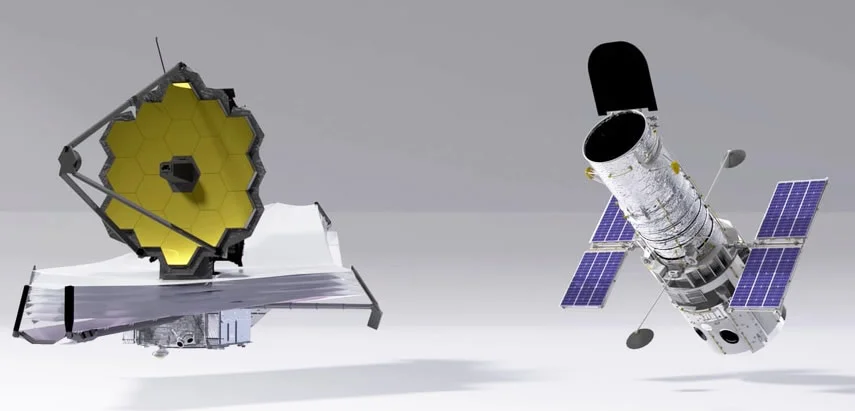Hubble vs Webb: A Comparison of Two Space Giants

Hey there, space enthusiasts! Today, we're embarking on an exciting journey through the cosmos as we compare two astronomical behemoths: the Hubble Space Telescope (HST) and the newly launched James Webb Space Telescope (JWST). Get ready for an intergalactic ride as we delve into the similarities, differences, and the ongoing significance of these technological marvels in our quest for stellar knowledge.
How do the engineering of JWST and Hubble compare and contrast?
Similarities: Despite the decades that separate their launches, the Hubble and JWST share some common engineering traits. Both telescopes are feats of space technology, equipped with highly sophisticated lenses and sensors that capture incredibly detailed images. Additionally, both are space telescopes, avoiding atmospheric interference to ensure sharp and clear imagery.
Differences: One key difference lies in their locations and focus. While the Hubble orbits in low Earth orbit, the JWST is situated at a point called Lagrange L2, 1.5 million kilometers away from Earth. This strategic location allows the JWST to observe the universe in infrared wavelengths, providing us with an entirely new and revealing perspective.
The Stunning Images from JWST Don't Spell the End for Hubble
Remember the first time you saw the breathtaking images captured by the Hubble? Those snapshots reshaped our understanding of the cosmos! Now, with the arrival of the JWST and its mesmerizing infrared images, one might think that the Hubble has fulfilled its purpose. But that's not entirely true!
Hubble's Continued Relevance for New Observations
Think of it this way: imagine the Hubble as a camera with a spectacular lens, while the JWST is a camera with a unique infrared filter. Both can capture spectacular shots, but each has its own distinct capabilities. The Hubble remains vital for observations in visible and ultraviolet wavelengths, while the JWST dazzles in the infrared. Together, these two telescopes offer us a more comprehensive view of the universe.
How Long Will Hubble Last? How About JWST?
The question of these telescopes' lifespans is crucial. Launched in 1990, the Hubble has exceeded all expectations, operating for over three decades. However, its lifespan isn't infinite. As parts age and systems degrade, its performance will diminish over time.
On the other hand, the JWST, being the new kid on the block, is designed for a nominal mission of 10 years, but that doesn't mean it will stop functioning at that point. Space missions often outlast their original expectations. Who knows how many astonishing discoveries the JWST will unveil in the years to come!
Conclusion
In the end, both the Hubble and JWST are integral pieces of our cosmic exploration. Each brings its unique perspective and technological prowess to uncover the mysteries of the universe. Instead of viewing the JWST as a replacement for the Hubble, let's see them as cosmic companions guiding us toward a deeper understanding of our place in the universe.
Frequently Asked Questions
Why is Hubble still important with the JWST around?
Despite the stunning infrared images from the JWST, the Hubble remains crucial for observations in other wavelengths, providing a full spectrum of cosmic insights.
How long will each telescope last?
The Hubble has exceeded expectations, still operational after over 30 years. The JWST has a nominal mission of 10 years but might last longer, as seen with other space missions.
How are these telescopes kept operational?
Space telescopes are monitored and maintained by Earth-based teams. Software updates and adjustments are made to ensure optimal performance.
What recent discoveries have been made thanks to these telescopes?
Both the Hubble and JWST have contributed to discoveries like the accelerated expansion of the universe, exoplanets, and galaxy formation. Each image reveals new secrets of the cosmos.
Reference:
Deja una respuesta

IMPRESCINDIBLES DE LA SEMANA